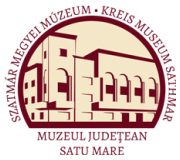Marta, Liviu: The Late Bronze Age Settlements of Petea-Csengersima (Satu Mare, 2009)
VI. Annexes
o categoria A ■ categoria B a categoria C Table 4. Distribution in percentage of pig remains according to meat quality, the Suciu de Sus culture Ovicaprinae (sheep and/or goat): This category is represented by 18 pieces of bones. It should be considered that most of the undefined elements that originated from medium size mammals probably belonged to this category. Besides teeth there was a significant quantity of elements that represented high quality meat (Table 5). Unfortunately the slaughter age can be established only on 5 elements, of which 4 were teeth: 3 adults, one subadult and a juvenile (tibia). The size and condition of bones did not allow the observation of artificial alterations, except one gnawed radius (Csengersima Complex 180) and one gnawed metacarpus (Csengersima Complex 514). The conclusion to this is that sheep and goats seemed to be bred primarily for meat and less for wool and milk. ■ categoria A B categoria B □ categoria C □ dinti Table 5. The distribution in percentage of sheep/goat remains according to meat quality, the Suciu de Sus culture Equus caballus (horse): Horses of the Bronze Age had, in general, a 'superior role'. At that time they hardly began to spread and they were highly appreciated for their power and impetuosity. The site Petea-Csengersima uncovered 19 fragments and a minimum number of individuals of 7. The bones originated from various areas of the body without any visible relation among them, and these elements belonged in most part to category C (Uerpmann). Their position was interesting: they didn't seem very scattered, 7 pieces occurred in Complex 514, and 6 occurred in 189, each of them contained at least 2 different individuals. Concerning the slaughter age, there were 7 adults identified and the undefined individuals are questionable subadults or adults. Only one fragment of a metapodium had traces of teeth on it, so it can be stated that the artificial alterations were missing. The partial mandible of a stallion provided metrical data (Table 6.) 185
